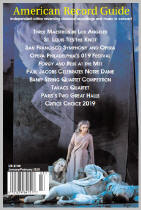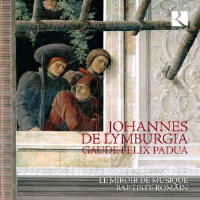Texte paru dans: / Appeared in: |
|
|
Outil de traduction ~ (Très approximatif) |
|
|
Reviewer: Peter
Loewen Johannes de Lymburgia may actually be from Limburg or nearby Baelen. It’s a common enough name to cause confusion, especially when you have more than one composer named John who comes from this region. According to Baptiste Romain’s research, there was a cantor named Johannes at the church of St John the Baptist in Liege as early as 1408. There was another Johannes cantor Limburgia in the entourage of bishop Pietro Emiliani in Vicenza in 1431. Are they one and the same? Other composers in this period had made their way from Liege to northern Italy, Johannes Ciconia for one. There are more than 40 Latin polyphonic works in the Bolognese manuscript Q15 of the Museo Internazionale e Biblioteca della Musica attributed to a Johannes de Lymburgia, compiled some time between 1430 and 1435—which, according to Romain, would make him one of the most important church composers of the early 15th Century. The motets, Magnificat, and troped mass movements speak for themselves. The quality of the music is quite high, as are the performances. Some works are performed expertly on instruments, but most are sung with string or keyboard accompani-ment. Lymburgia’s tendency to write long melismas, frequent double leading-tone cadences, and parallel first inversion triads shows his music in step with his contemporaries Ciconia, Dunstable, and Dufay. Lymburgia’s music is also appealing for its tunefulness and harmonic beauty. Quite striking are the songlike pieces ‘Magne Dies Letice’, ‘Recordare Frater Pie’, and ‘Salve Virgo Regia’. Their lucid chordal textures suggest faux-bourdon singing, a method of improvisation that places a chant in an upper voice while two other voices improvise parallel 4ths and 6ths below. Texts
and notes are in English. | |
|
|
|
|
Cliquez l'un ou l'autre
bouton pour découvrir bien d'autres critiques de CD |
|




